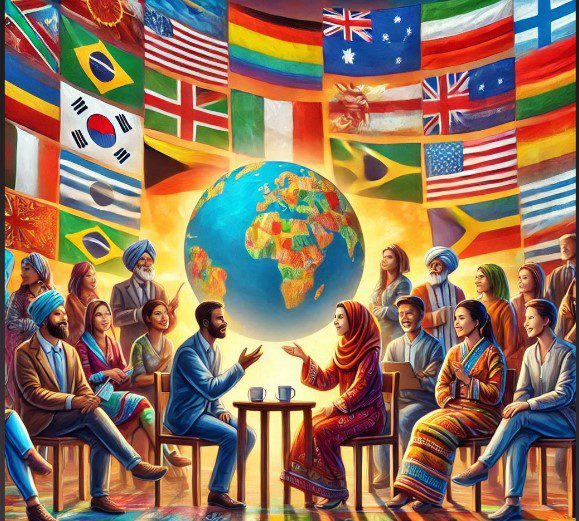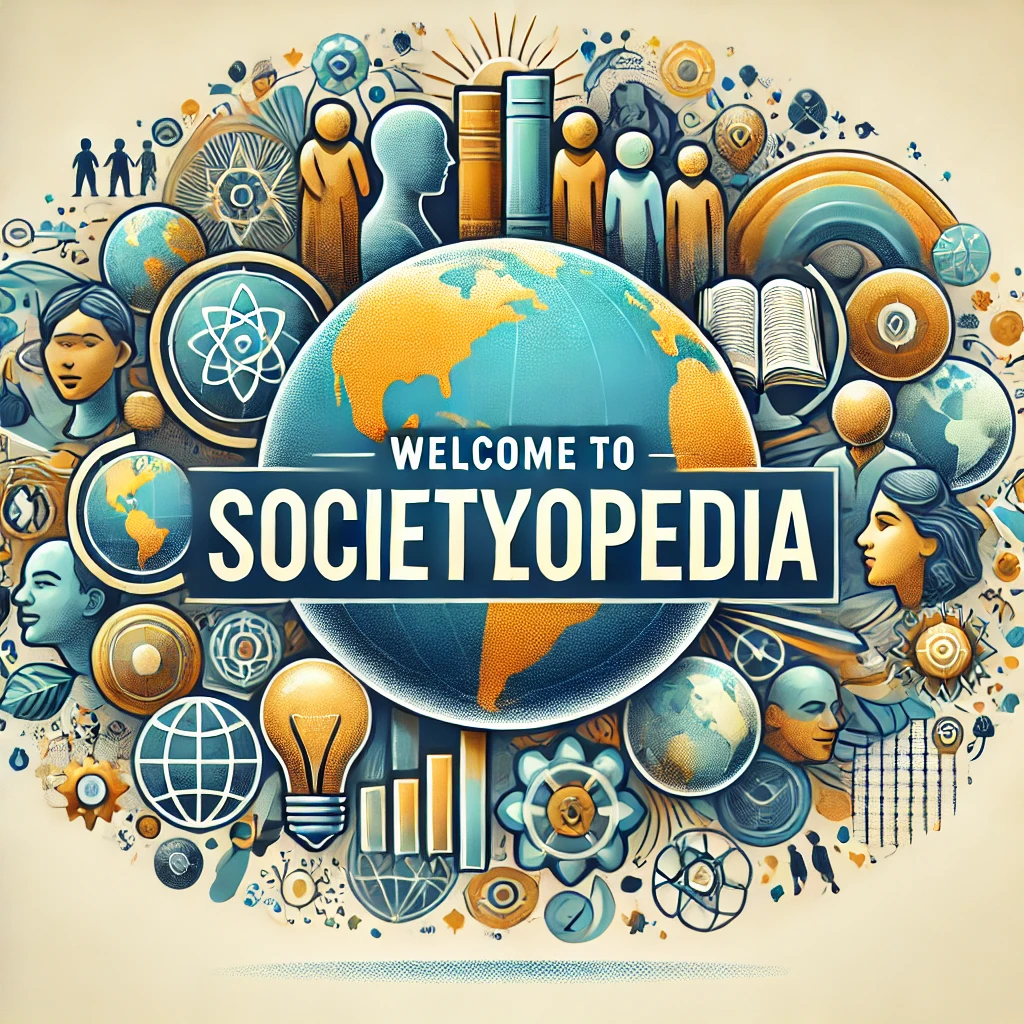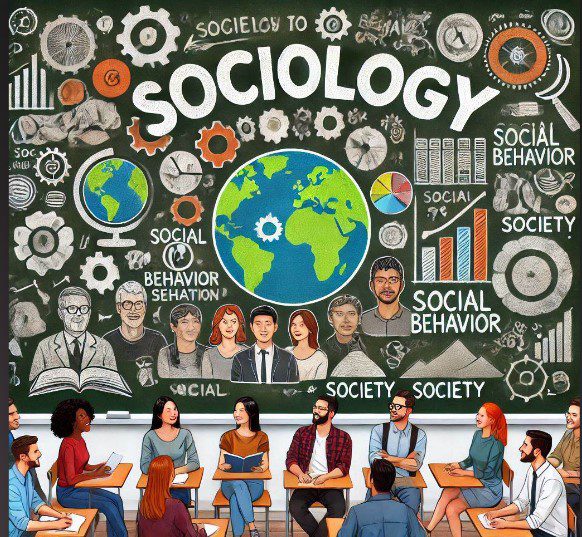Globalization, the increasing interconnectedness of people, economies, and cultures across the world, has significantly impacted cultural values. As borders blur and interactions between nations intensify, cultural exchange accelerates, transforming traditional beliefs, norms, and practices. While globalization fosters a shared global culture, it also challenges local traditions, creating tensions between modernity and heritage. Below is an exploration of how globalization is reshaping cultural values with examples from around the world and specific insights into its effects on societies like Pakistan.
1. Blending of Cultures: Cultural Hybridization
One of the most visible effects of globalization is the merging of cultural elements, leading to hybrid cultural practices.
Key Features:
- Cultural Exchange: People adopt elements of foreign cultures, such as language, fashion, food, and festivals, blending them with their local traditions.
- Examples:
- In Pakistan, global trends in fashion—like the fusion of Western-style clothing with traditional shalwar kameez—reflect cultural hybridization. Designers incorporate global patterns and styles, especially during events like Pakistan Fashion Week.
- In India, the popularity of fast food chains like McDonald’s has resulted in localized offerings such as the “McAloo Tikki” burger, a blend of Western fast food culture and Indian vegetarian preferences.
2. Consumerism and Changing Lifestyles
Globalization promotes consumer culture, influencing values around materialism, individualism, and lifestyle choices.
Key Features:
- Global Brands and Media: Multinational corporations and global advertising shape consumer desires and redefine standards of success and happiness.
- Examples:
- In developing countries like Pakistan, the desire for branded goods (e.g., Nike, Apple) reflects shifting values toward consumerism, particularly among the youth. The rise of shopping malls in cities like Lahore and Karachi signifies this transformation.
- Social media platforms like Instagram propagate global beauty standards, influencing fashion, body image, and self-expression worldwide.
Impact:
- Positive: Encourages modernization and innovation in industries.
- Negative: Can erode traditional values of simplicity and collective well-being, replacing them with individualism and materialistic ideals.
3. Shift in Gender Roles and Family Structures
Globalization has brought about significant changes in gender roles and family dynamics, often challenging traditional patriarchal norms.
Key Features:
- Women’s Empowerment: Exposure to global discourses on gender equality through international organizations, media, and education reshapes societal expectations for women.
- Family Structures: Traditional joint families are increasingly replaced by nuclear families due to urbanization and changing economic roles.
Examples:
- In Pakistan, more women are joining the workforce and pursuing higher education, inspired by global movements advocating for women’s empowerment. However, this has also sparked debates about balancing traditional gender roles with modern aspirations.
- In Japan, traditional family values emphasizing male breadwinners are evolving as women delay marriage to focus on careers, a trend linked to globalization and industrialization.
4. The Rise of a Global Youth Culture
Globalization has created a shared youth culture characterized by similar preferences in music, fashion, and technology, regardless of national boundaries.
Key Features:
- Media and Technology: Platforms like YouTube, TikTok, and Netflix disseminate global trends in entertainment and lifestyle.
- Examples:
- In Pakistan, global music genres like rap and hip-hop are increasingly popular among the youth, with local adaptations such as “Punjabi rap” blending global styles with indigenous languages.
- The K-pop phenomenon originating from South Korea has captured audiences worldwide, showcasing the power of globalized media.
Impact:
- Positive: Encourages cultural exchange and fosters global solidarity among young people.
- Negative: May dilute local cultural identities as global trends overshadow traditional practices.
5. Challenges to Traditional Values and Practices
While globalization introduces new ideas, it often conflicts with traditional norms, creating cultural tensions.
Key Features:
- Religious and Ethical Values: Western liberal values, such as individualism and freedom of expression, sometimes clash with conservative cultural or religious principles.
- Examples:
- In Pakistan, the increasing visibility of LGBTQ+ issues in global media has sparked debates in a society where such topics remain taboo.
- In Saudi Arabia, modernization efforts such as allowing women to drive and relaxing dress codes reflect a tension between global liberal values and traditional Islamic practices.
Impact:
- Positive: Encourages discussions on outdated practices and promotes progressive change.
- Negative: Sparks resistance and cultural backlash, as seen in movements to “preserve national identity” in many countries.
6. Language and Communication
Globalization promotes English as a global lingua franca, often at the expense of indigenous languages and dialects.
Key Features:
- Language as Power: English proficiency is increasingly seen as a symbol of education and upward mobility.
- Examples:
- In Pakistan, English-medium schools are perceived as superior to Urdu-medium schools, creating linguistic hierarchies that affect access to opportunities.
- Indigenous languages worldwide, such as Pashto or Sindhi in Pakistan, risk marginalization as English and Urdu dominate educational and professional domains.
Impact:
- Positive: Facilitates global communication and access to international opportunities.
- Negative: Threatens linguistic diversity and cultural heritage.
7. Cultural Homogenization vs. Cultural Resistance
Globalization promotes the idea of a “global culture,” but this often triggers resistance as communities seek to preserve their unique identities.
Key Features:
- Homogenization: Popular culture, such as Hollywood movies, fast food, and global sports events, promotes shared cultural experiences.
- Resistance: Local communities and governments push back against cultural erosion through initiatives to preserve traditions.
Examples:
- In Pakistan, globalized holidays like Valentine’s Day have gained popularity among urban youth, but they also face criticism from conservative groups defending traditional values.
- Countries like France enforce language purity laws to protect French from the overuse of English, demonstrating cultural resistance to globalization.
8. Global Solidarity and Social Movements
Globalization has connected people worldwide, enabling collective action and solidarity across borders.
Key Features:
- Shared Values: Globalization has facilitated the spread of universal values like human rights, environmental protection, and social justice.
- Examples:
- Global movements like Fridays for Future (led by Greta Thunberg) have inspired climate activism in countries like Pakistan, where young people are advocating for action against rising environmental challenges.
- The global spread of #MeToo has influenced conversations about gender-based violence in traditionally conservative societies.
Conclusion
Globalization is a powerful force reshaping cultural values worldwide. While it fosters cultural exchange, innovation, and global solidarity, it also challenges local traditions and raises concerns about cultural homogenization. Societies like Pakistan experience these changes acutely, with younger generations embracing global trends while older generations often strive to preserve heritage. Striking a balance between embracing global influences and protecting local identities is crucial for navigating the complexities of globalization in the 21st century.
Societyopedia is your partner in the exploration of social world


